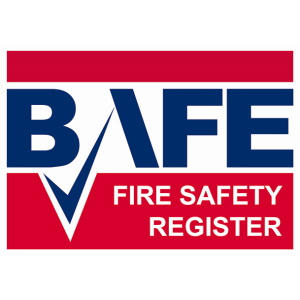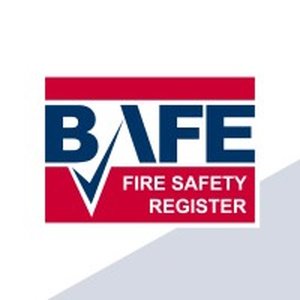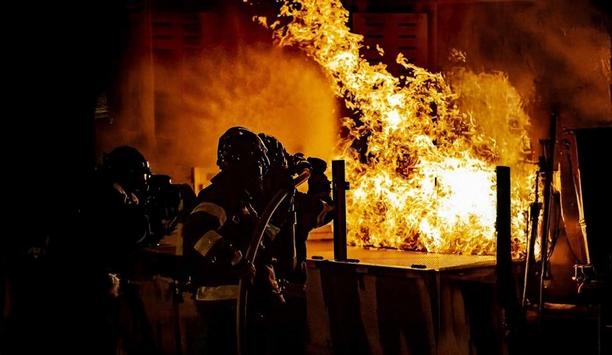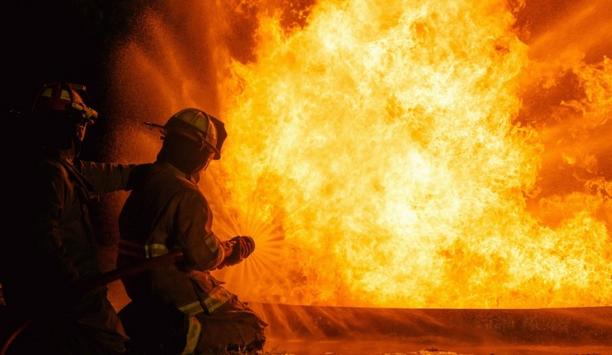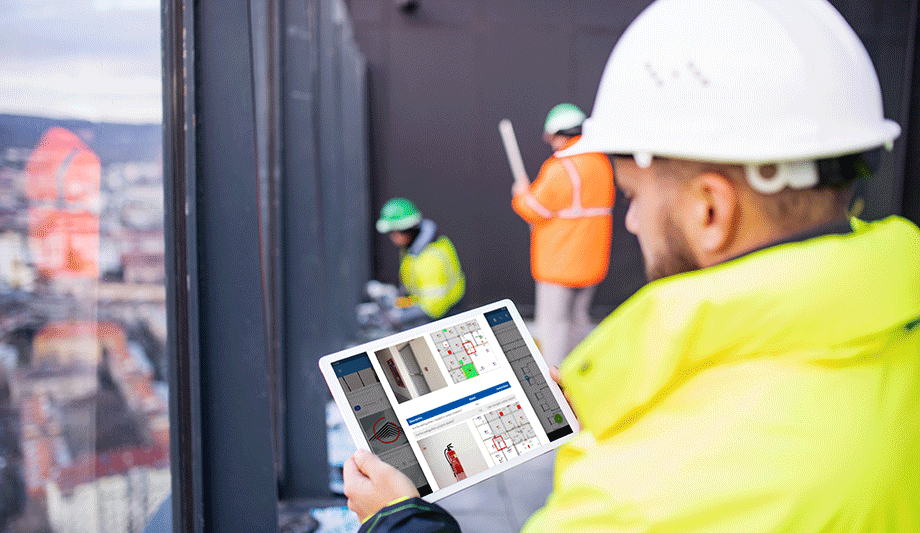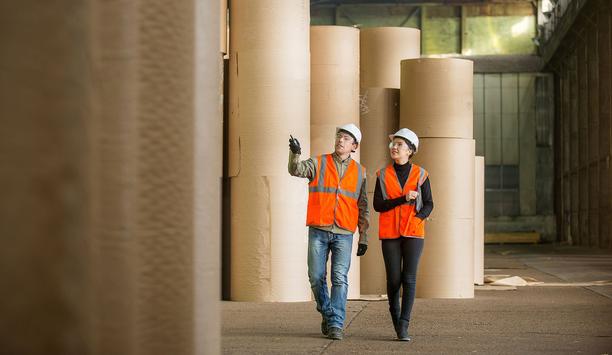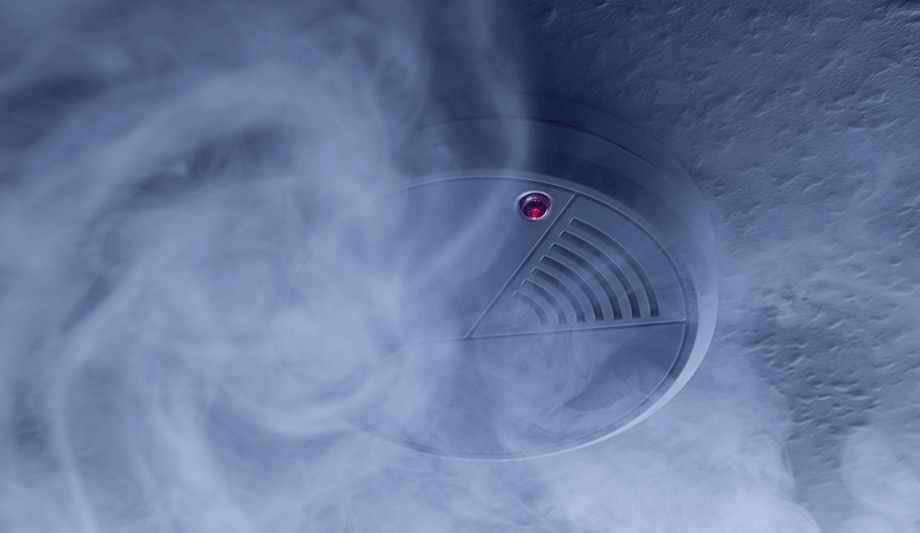BAFE (British Approvals for Fire Equipment) - Experts & Thought Leaders
Latest BAFE (British Approvals for Fire Equipment) news & announcements
At FireRite, they are proud of the associations in business that they have built up over two decades in the fire safety industry. That’s because it is the number of associations they align with that give they the edge over the competitors and ensure the fire health and safety advice is both contemporary and as good as it can possibly be. To the extent that they were awarded Best Fire Safety & Compliance Consultancy Business 2020 & 2021 at the recent Welsh Enterprise Awards. Importance Of Up-To-Date With Fire Legislation The contemporary angle for fire safety is crucial today in light of new fire safety laws designed to achieve greater accountability for fire and structural safety issues throughout the complete lifecycle of the building, from design through construction to occupation and beyond. FireRite Associations BSI is a business standards company that helps organizations all over the world attain excellence The associations include a number of third-party certification schemes, operated by certification bodies that are, themselves, accredited by the United Kingdom Accreditation Service (UKAS). These provide evidence of compliance with the recognized standard and that the organization itself has a suitable quality management system. An example is the National & Security Inspectorate (NSI). This is the pioneering certification body for the Security & Fire protection industries in the UK. Another is the BSI/ISO 9001 2015 scheme. BSI is a business standards company that helps organizations all over the world attain excellence in what they do. Standard of fire extinguisher manufacturer The Fire Safety Register (BAFE) is another association that was originally created by the industry to regulate and raise the standard of fire extinguisher manufacture. It now also focuses on fire alarms, extinguisher maintenance, systems, emergency lighting, and fire risk assessment. BAFE’s Chris Auger is now a member of the government’s Industry Competence Committee (IICC). @BAFEFIRE: “The work of the IICC will play an important role in supporting the shadow Building Safety Regulator and raising competence across the built environment and fire sectors”. Best standards in terms of products They are proud members of the ECA; the Managing Director, Gareth Selway, represents the ECA Wales and sits on the FSA Committee, reviewing and advising on changes to legislation and British Standards. We’re also members of Constructionline, SAFE contractor and the ASFP, the Association for Specialist Fire Protection who "strives to promote excellence in the design and installation of fire protection products through high quality and technical expertise." What’s more, they’re proudly part of the installer certification scheme FIRAS, which is "the mark of endorsement of competency in the installation of products and systems, vital for achieving the protection required." By aligning themselves, with these associations, they are providing the very best standards in terms of products, management, and health & safety advice. FireRite–One-Stop Shop The result is innovative solutions that are easy to install, monitor, and service From Building inception, they provide cradle to grave solutions in line with the Golden thread offering Consultancy, Active & Passive solutions and maintenance programs. Advising on the installation and maintenance of fire safety materials and standards is what they specialize in here at FireRite. They can make sure that the fire protection is as good as it possibly can be and that it will pass all current government legislation. They can also provide training and technical expertise for staff. The result is innovative solutions that are easy to install, monitor, and service. Who Are the Customers? They may be impressed to hear that they work with a range of public sector organizations, such as local authorities, housing associations, the NHS and the MOD. The points of contact are procurement managers, compliance officers, managing directors, and facilities managers.
Following the tragic fire at London’s Grenfell Tower back in June 2017, it has become more important than ever to check third-party fire certification for goods and services. Although the Independent Review of Building Regulations and Fire Safety Report into the incident in which 72 people lost their lives failed to mention third-party certification, the government’s own guidance certainly does. Fire safety officers It states: “Third-party quality assurance can offer comfort, both as a means of satisfying you that goods and services you have purchased are fit for purpose, and as a means of demonstrating that you have complied with the law.” BAFE is the independent registration body for third-party certificated fire safety service providers in the UK. It provides third-party certification for both individuals and companies so that fire safety officers can prove they are ‘competent individuals’. What does third-party certification mean? A person or company that has third-party credentials has shown themselves to be competent in their field An individual or company that has third-party certification has shown themselves to be competent in their field, in this case, fire safety. Stephen Adams, BAFE Chief Executive, said it meant the individual or company being hired were up to speed with industry practices and knowledge. @BAFEFIRE added: “A (fire) duty holder should not have to know every minute detail of the relevant codes of practice and standards for the fire safety provisions they require, but they should have access to categorically know if the company they choose does (and keeps this level of knowledge and competency up to date). Clear and reliable evidence of this is third-party certification.” Checking who has certification One way to check if an individual or company has third-party certification is to check with the BAFE Fire Safety Register. This is available online and lists all contractors who are qualified with the organization, including in which particular areas of fire safety they are fully qualified and, therefore, experts. BAFE’s third-party certification is assessed via UKAS accredited Certification Bodies. Here, they will find a list of names from individuals and small two-person companies to large national firms employing hundreds of people. Fire risk assessments Fire risk assessments like fire doors and the care of fire alarm systems are all important for saving lives Carrying out a check shows that a fire duty holder has made reasonable steps to verify the competency of the third-party provider. Fire risk assessments, the provision of firefighting equipment, such as fire doors and the maintenance of fire alarm systems are all important for saving lives in fires. And yet, too many people take it for granted that safety checks are carried out and firefighting equipment maintained, say BAFE representatives. People’s lax attitudes came to light in a recent study carried out by the international power management company, Eaton. In a survey of more than 2,000 UK individuals, they discovered that 54 percent of those who responded didn’t concern themselves with whether or not the building was capable of coping with a fire caused by an electrical fault. The Fire Safety Act 2021 An Amendment to the Fire Safety Act 2021 was made law in April this year and clarified that it also applied to the structure and external walls of a building, including any common parts. It extends to attachments to external walls (such as cladding and balconies).
A dry riser is, in fact, simply a set of permanently installed pipework (water inlets, pipes, and outlets) spread through a building on all levels and which firefighters can access to help them fight a fire on an upper floor of a building. An air valve is fitted at the top of the pipework so that air can be released when the system is full of water. Fire-resisting enclosures surround the pipework. It is called a dry riser because it should always remain empty and only be filled with water during an actual fire or when being tested. Emergency fire situation Having a fixed water distribution system, such as a dry riser, allows firefighters to get much bigger quantities of water to the upper reaches of a building in a short space of time. This is obviously a huge help in an emergency fire situation and prevents firefighters from having to lug long and heavy hoses up the stairs and through the various landings of a building. Basements of large buildings Firefighters access the dry riser via the fire hose water inlet valve on the ground Firefighters access the dry riser via the fire hose water inlet valve on the ground. They can then pump water up the dry galvanized steel piping to landing valves (outlets) at particular locations around the building. Each floor will have its own dry riser cabinet. They will also find dry risers in the basements of large buildings or even in underground car parks. Dry risers are particularly useful for buildings that are at least 18 meters high. This includes many multi-storey flats and other high-rise buildings. Dry risers vs wet risers A dry riser differs from a wet riser in that the former doesn’t have its own dedicated water supply. The wet riser has an automatic system to pump water at the high pressures necessary. That’s because these tend to be installed in buildings that are more than 50 meters high. You will also find them in tall buildings where there isn’t enough space for a fire engine to get close enough. Maintenance of a dry riser These checks allow firefighters to detect any previous vandalism to the pipes, equipment It’s important to inspect a dry riser (and a wet riser) every six months and test it annually to ensure that if an emergency occurs, it will perform well. The annual test involves pressure testing the pipes by running water through the system for at least 15 minutes. This is a long enough time to check whether or not there are any leaks, blockages, or other faults that could hamper its performance. The checks are in line with fire safety regulations set out in BS9990. These checks allow firefighters to detect any previous vandalism to the pipes, equipment, or the building itself, which could prevent the water from reaching its destination quickly – if at all. In doing so, they can then make the necessary repairs. BAFE service and maintenance requirements @BAFEFIRE: “If your building has a dry riser or wet riser in place BAFE strongly recommends using an appropriately third-party certificate provider for your service and maintenance requirements." "It is a legal requirement to ensure these provisions are maintained appropriately, so it remains ready and effective in the event of a fire.”
Insights & Opinions from thought leaders at BAFE (British Approvals for Fire Equipment)
The fire industry has made it absolutely clear, led by authorized bodies including the BAFE Fire Safety Register, that the current pandemic does not remove the need to comply with any fire safety requirements under the Building Regulations. As we now look beyond the lockdown period, John Allam, Operations Director at Amthal Fire and Security reviews the raft of new proposals demonstrating the Government and industry’s commitment to compliant fire safety and new immediate demands placed on responsible persons. Multi-Occupancy residential buildings Whilst the second phase of the Grenfell Tower Inquiry has been put on hold until July at the earliest over coronavirus restrictions, the government has continued its quest to effect change and bring the Fire Safety Bill and Building Safety Bill into legislation. While the Building Safety Bill will ‘place new and enhanced regulatory regimes for building safety and construction products’, both bills aim to strengthen the ‘whole regulatory system’ for both building and fire safety. The Fire Safety Bill will apply to England and Wales, to amend the Fire Safety Order 2005 and seeks to clarify responsibility for reducing fire risk in multi-occupancy residential buildings. The details of the Fire Safety Bill, which has now had its second reading in the House of Commons, includes recommendations of regular inspections of lifts and sprinkler systems for buildings over 11m tall. Quarterly fire door inspections Building owners will now face ‘enforcement action’ from emergency services if they do not manage fire risk Significantly, it also introduces compulsory quarterly fire door inspections, which is a hugely significant development in its own right, to influence an industry where this is no specific legislation that requires fire doors to be checked. The Fire Safety Bill intends to ensure evacuation plans are reviewed, regularly updated and communicated to residents in a ‘form that they can be reasonably be expected to understand.’ And it highlights the importance of individual flat entrance doors, where the external walls of the building have unsafe cladding, comply with current standards. This will play a key part in increasing residents’ fire safety, whereby building owners will now face ‘enforcement action’ from emergency services if they do not manage fire risk in a building’s structure. Improving the fire safety of buildings In addition, the government is consulting with the National Fire Chiefs Council to begin testing evacuation alert systems for high-rise blocks of flats, which could support fire and rescue services’ operational response by alerting residents if they need to escape. The National Fire Chiefs Council to begin testing evacuation alert systems for high-rise blocks of flats The new program will be governed by a Building Safety Regulator (BSR) that will initially be led by Dame Judith Hackitt during the set up phase, who will be tasked with improving the fire safety of buildings. Launched by The RT Hon Robert Jenrick MP Secretary Of State for Housing, Communities and Local Government, he cited the new program as taking, “Ambitious steps to further reform the building safety system with the biggest changes in a generation to ensure residents are safe in their homes.” He added: “This new regime will put residents’ safety at its heart, and follows the announcement of the unprecedented £1 billion fund for removing unsafe cladding from high-rise buildings in the budget.” Major regulatory decisions The BSR will be responsible for all major regulatory decisions made at key points during design, construction, occupation and refurbishment of buildings. And such decisions and obligations must be upheld and maintained throughout a development’s life. The new safety case regime will apply not only to new buildings, but also to buildings that are already in use" In Dame Judith’s own words: “When introduced by the new regulator, the new safety case regime will apply not only to new buildings, but also to buildings that are already in use and occupied. If those buildings were built to poor standards in the past, it will not be the case that you can simply say ‘well it complied with building regulations at the time’. The test will be different. The test will be ‘is this building safe to be occupied?’ and, if not, what are you going to do to improve it?’ … People will be asked to think about what they can do, what is reasonable and what is practicable to do in order to improve the safety of a given building.” Regulating the fire safety industry Both Hackitt and the Government want the BSR to be set up in shadow form before the Building Safety Bill becomes law. The plan is to put the bill before Parliament by the autumn, despite the challenges thrown by the Pandemic. The new legislation proposed by Government will undoubtedly ensure that buildings and those that live and work in them are maintained to be fire safe. In the words of BAFE CEO Stephen Adams: “The time is right to help better regulate the fire safety industry to change end user behavior and create a UK that's safer from the devastating effects of fire.” As BAFE further attests, as lockdown measures begin to be lifted, there will be a need for the competent maintenance of fire safety systems/provisions and fire risk assessment work. Fire doors and risk assessments Amthal is working closely with building owners and managers across the UK to deliver the benefits of safer environment This means for those who own or manage residential buildings, will soon be ‘held into account’ if they do not ensure fire safety in their buildings, and the requirements will impact further on costs and resource allocation, for investigating buildings and ensuring compliance. There is a definite sense to be proactive in acceptance of the new impending legislation. But the concern cited amongst building owners is the industry’s ability to undertake the volume of assessments required, given the lack of current lack of specific legislation on specific elements such as fire doors and risk assessments, together with the steep expectations for fire strategy and evacuation plans. Amthal is working closely with building owners and managers across the UK to deliver the benefits of safer environment within a holistic fire safety approach. Working in partnership, means taking the time to understand the implications of the Government’s Fire Safety Bill, alongside the implications of the Building Safety Bill and BSR program. This way, we can ensure responsible persons confidently achieve all operational requirements for the ultimate benefit of residents’ peace of mind.
Why do gas engineers need to become Gas Safe Registered? Why do heavy goods vehicle (HGV) drivers need to have an advanced driving license? We all know the answers to these questions: To determine competency and reduce risk. Because they are mandatory, it is simply expected. Premises managers expect the same competency from their fire safety providers; however, there are no mandatory measures in place to ensure a particular level of competency is met. But there should be, says Stephen Adams, Chief Executive of BAFE, an independent registration body for third party certified protection companies across the United Kingdom. Advocating certification of fire safety competency Third party certification (or any system to monitor competency) is not mandatory in the fire safety industry at present, which presents unnecessary risk, says Adams. Third Party Certification (or any system to monitor competency) is not mandatory in the fire safety industry at present, which presents unnecessary risk There is a benefit to the customer of using a provider that is independently and regularly assessed by a UKAS Accredited Certification Body to ensure they are competent to deliver the specific required service. Sourcing a provider who holds the appropriate third-party certification will also provide strong evidence of acting with due diligence in following fire safety legislation. “Certainly for high-risk premises, not just those above a certain height but those where the occupants or function demands strong fire protection, there needs to be mandated third party certification of the competence of all those involved,” says Adams. “This is not just at the initial construction stage, but throughout the building life cycle as use, occupancy and technology change. The end user and those responsible for building safety have the key responsibility, together with input from the Fire and Rescue Services, providers and public authorities to ensure ongoing compliance and recording of actions.” Determining competency for fire safety services BAFE was first established in 1984 within FETA (Fire Extinguishing Trades Association) and the British Fire Protection Systems Association (BFPSA). Since 2009, however, BAFE has been independent and has evolved into developing and monitoring schemes to determine competency for multiple fire safety services. BAFE develops schemes based on defined quality standards and industry best practice for fire safety service providers to achieve and become Third Party Certificated. These assessments are performed by UKAS Accredited Certification Bodies (licensed by BAFE). Only when a company holds appropriate and valid Third Party Certification are they permitted to become BAFE Registered and appear on the national register available free to view at on their website. BAFE’s competency schemes BAFE offer competency schemes for the following areas: Fire extinguisher servicing/maintenance (BAFE SP101) Fire risk assessment (BAFE SP205) Kitchen fire protection systems (BAFE SP206) Dry and wet riser/falling installations servicing/maintenance (BAFE SP105) The SP203 suite of schemes is modular and offers competency criteria for the design, installation, commissioning and/or maintenance of: Fire detection and alarms systems (BAFE SP203-1) Fixed gaseous fire extinguishing systems (BAFE SP203-3) Emergency lighting systems (BAFE SP203-4) BAFE has dedicated monitoring groups for each scheme that meet regularly to ensure they continue to represent the highest levels of competency within the industry. Supporting UK fire safety BAFE has been active in efforts to influence and support fire safety for the UK. This includes work with the appropriate Competence Steering Group (CSG) working groups established since the publication of the Hackitt review (“Building a Safer Future”). Chris Auger, Head of Schemes – BAFE, is currently Secretary to WG2 (Installers) and WG4 is continuing to develop competence standards for Fire Risk Assessors to meet the requirements of high-risk residential buildings (HRRBs). BAFE also has close working relationships with organisations including UKAS (United Kingdom Accreditation Service), FSF (Fire Sector Federation), FIA (Fire Industry Association), FPA (Fire Protection Association), IFEDA (Independent Fire Engineering and Distributors Association), Construction Industry Council (CIC) and multiple Certification Bodies. Raising the bar BAFE exists to help raise the bar of competency within the fire safety industry across the United Kingdom, says Adams. Their ethos is in a strong belief in Third Party Certification. BAFE exists to help raise the bar of competency within the fire safety industry across the United Kingdom “Whilst we strongly believe the BAFE schemes offer a quality, independent method of determining competency for a specific service though a range of Certification Bodies, we purely want Third Party Certification to be the baseline absolute requirement for any fire safety work (where it is available),” says Adams. BAFE stands with FPA Managing Director Jonathan O'Neill’s request to Government to mandate Third Party Certification. The more providers that hold Third Party Certification, and the more end users that request it, the stronger the argument to Government to mandate this requirement for a better regulated industry. Addressing the misconceptions A misconception about fire safety Third Party Certification from end users (e.g. premises management) is that it covers all fire safety services offered. BAFE this year have launched a new campaign, “Don’t Just Specify, Verify!,” to highlight this issue. “Before awarding any contract, we are trying to educate people to verify their chosen contractor’s Third Party Certification to ensure it is appropriate for the work they require,” says Adams. Whilst most customers understand that they should have fire protection systems, they do not adequately understand the need for a full and competent Fire Risk Assessment. There are still “assessors” who will offer one for ridiculously low prices, often without even entering the building. The need for fire risk assessments The Fire Risk Assessment is a mandatory requirement and forms the basis for all other activity – and must be kept up to date. By not using a competent provider, the responsible person is leaving themselves open to prosecution and serious loss of life and property. The horrific Grenfell fire that unfolded on 14th June 2017 raised interest and awareness of fire safety measures, their relationship to the whole construction and what should be in place to keep any premises safe. The horrific Grenfell fire that unfolded on 14th June 2017 raised interest and awareness of fire safety measures Adams says BAFE saw an increase in companies gaining Third Party Certification, especially to the Life Safety Fire Risk Assessment (SP205) scheme. “This is a skill that needs greater emphasis and some mandatory measures introduced to ensure competent persons are completing this vital action,” says Adams. “We welcome any stronger measures following the Hackitt Review to introduce robust methods of logging activity across the whole building life cycle (the ‘Golden Thread’ of information) in the interest of acting will due diligence creating safer buildings from fire.” The Fire Risk Assessment is a mandatory requirement and forms the basis for all other activity – and must be kept up to date “A year from now, we anticipate that the Hackitt requirements will be built into legislation and the Building Regulations across all parts of the UK,” says Adams. “By 2023 BAFE and the industry would like to see mandatory measures in place to monitor and determine competency of providers offering specific services. Most notable are services such as fire risk assessment, both commercial and domestic fire detection and alarm systems plus multiple other areas including many passive fire protection design and installation services. Certificated services should extend across all aspects of fire safety, passive and active, and include greater monitoring of individual as well as company competence.” Trade associations such as FIA and IFEDA demand third party certification as a core membership requirement, and other important professional bodies such as the FPA are calling out to Government to mandate third party certification, says Adams. “It would shake up the industry dramatically, leaving only the evidentially competent able to provide these works,” he says.
The New Future For Fire Agencies
DownloadThe Eight Key Trends in Fire Detection in 2023
DownloadA Digital Platform to Improve Fire Safety Compliance and Inspections
DownloadOvercoming the Challenges of Fire Safety in the Paper Industry
DownloadCarbon Monoxide: Creeping Killer Caught In The Act
Download





